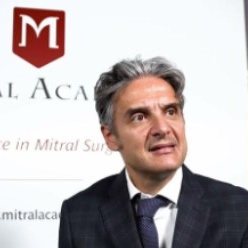New Progress and Challenges in Clinical Cardiac Surgery
A special issue of Journal of Clinical Medicine (ISSN 2077-0383). This special issue belongs to the section "Cardiology".
Deadline for manuscript submissions: 20 July 2024 | Viewed by 914
Special Issue Editor
Interests: coronary artery bypass surgery; coronary artery disease; interventional cardiology; cardiac surgery
Special Issues, Collections and Topics in MDPI journals
Special Issue Information
Dear Colleagues,
This Special Issue aims to serve as a platform for exploring the latest advancements and persistent challenges in clinical cardiac surgery. It seeks to reflect the current research status in the field, shed light on core problems, and foster innovation that can drive significant improvements in clinical medicine. Our primary objectives include showcasing breakthroughs in cardiac surgical techniques, addressing complex issues encountered in clinical practice, and promoting collaborative efforts to enhance patient care and surgical outcomes.
The scope of this Special Issue encompasses a wide array of topics within clinical cardiac surgery. We invite research articles, case studies, and reviews that delve into various aspects, including novel surgical approaches, postoperative complications, patient outcomes, advancements in surgical technology, and the integration of emerging technologies such as robotics and telemedicine. The focus is on practical, real-world applications, with an emphasis on how these developments impact the field of clinical medicine.
We extend an invitation to leading cardiac surgeons, researchers, and clinical experts to contribute their insights and findings to this Special Issue. By collating their experiences, innovations, and research outcomes, we aim to create a collaborative environment that can shape the future of clinical cardiac surgery. The mobilization of knowledge within this Special Issue will have a direct and positive impact on clinical medicine by addressing the current challenges and driving innovation, thereby improving the quality of care and outcomes for patients undergoing cardiac surgical procedures.
Prof. Dr. Giuseppe Nasso
Guest Editor
Manuscript Submission Information
Manuscripts should be submitted online at www.mdpi.com by registering and logging in to this website. Once you are registered, click here to go to the submission form. Manuscripts can be submitted until the deadline. All submissions that pass pre-check are peer-reviewed. Accepted papers will be published continuously in the journal (as soon as accepted) and will be listed together on the special issue website. Research articles, review articles as well as short communications are invited. For planned papers, a title and short abstract (about 100 words) can be sent to the Editorial Office for announcement on this website.
Submitted manuscripts should not have been published previously, nor be under consideration for publication elsewhere (except conference proceedings papers). All manuscripts are thoroughly refereed through a single-blind peer-review process. A guide for authors and other relevant information for submission of manuscripts is available on the Instructions for Authors page. Journal of Clinical Medicine is an international peer-reviewed open access semimonthly journal published by MDPI.
Please visit the Instructions for Authors page before submitting a manuscript. The Article Processing Charge (APC) for publication in this open access journal is 2600 CHF (Swiss Francs). Submitted papers should be well formatted and use good English. Authors may use MDPI's English editing service prior to publication or during author revisions.
Keywords
- coronary artery bypass grafting (CABG)
- mitral valve repair
- aortic valve replacement
- percutaneous coronary intervention (PCI)
- heart transplantation
- atrial fibrillation ablation
- ventricular assist devices (vad)
- minimally invasive cardiac surgery






